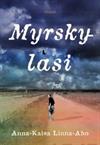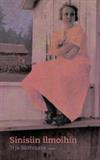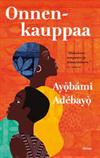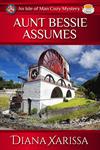
Moloka'i
2 journalers for this copy...
This is the story of Rachel Kalama, a Hawaiian girl, who was taken from her family and sent to the leper colony on Moloka'i because she had leprosy. It tells the story of her life and of the lives of all the other people who were sent there. The story starts in 1891 and ends in 1970. It is a work of fiction, though the details were taken from many historical documents and from the writings of people who lives there. I enjoyed it alot and recommend it.
Now in my hands, and I've already started reading it.
I was afraid that this story would be too simplistic and a tear-jerker. It turned out that I shed a few tears, but the story was not simplistic. In fact, I was impressed with the author's intent and ability to weave real historical people into the story and with the amount of research he did in order to do justice to to the tale of the real citizens of the leper colony on Moloka'i.
Rachel Kalama, the main character, is a 5-year-old living in Honolulu when it is discovered that she has leprosy. She is taken from her family and sent to an isolation hospital in Honolulu. About a year later, she is sent to Moloka'i and lives in the home for girls run by some Franciscan nuns. The sisters treat her well, but she watches everyone around her, the other children, suffer disfigurement and pain and eventually die from the disease. Rachel's experience is a bit different since leprosy's progression takes many forms; her leprosy progresses slowly and is less disfiguring, so she has a longer life. By telling Rachel's story, the author chronicles the history of the colony, describes the lifestyles and courage of the lepers, and relates the history of treatment development for leprosy (now called Hansen's disease). It is well-documented that Hawaii did more to care for its lepers than any other country had at that point in history, but it was still an incredibly difficult and frightening experience for sufferers, removed from homes and families, and difficult also for those brave people who lived on Moloka'i to be caregivers. The author also described the biases and fear that drove people in Hawaii to ostracize the families left behind, so that families often lost jobs and had to relocate away from anyone who knew that they were related to a person with leprosy.
The books includes a conversation with the author and a book group guide. I was very impressed with the author's desire to present the full historical record. I found Rachel's story compelling and was saddened when she lost various loved ones. The ending was both sweet and heart-wrenching but not at all unrealistic.
I found some interesting info on Kalaupapa at http://www.nps.gov/kala/index.htm
Rachel Kalama, the main character, is a 5-year-old living in Honolulu when it is discovered that she has leprosy. She is taken from her family and sent to an isolation hospital in Honolulu. About a year later, she is sent to Moloka'i and lives in the home for girls run by some Franciscan nuns. The sisters treat her well, but she watches everyone around her, the other children, suffer disfigurement and pain and eventually die from the disease. Rachel's experience is a bit different since leprosy's progression takes many forms; her leprosy progresses slowly and is less disfiguring, so she has a longer life. By telling Rachel's story, the author chronicles the history of the colony, describes the lifestyles and courage of the lepers, and relates the history of treatment development for leprosy (now called Hansen's disease). It is well-documented that Hawaii did more to care for its lepers than any other country had at that point in history, but it was still an incredibly difficult and frightening experience for sufferers, removed from homes and families, and difficult also for those brave people who lived on Moloka'i to be caregivers. The author also described the biases and fear that drove people in Hawaii to ostracize the families left behind, so that families often lost jobs and had to relocate away from anyone who knew that they were related to a person with leprosy.
The books includes a conversation with the author and a book group guide. I was very impressed with the author's desire to present the full historical record. I found Rachel's story compelling and was saddened when she lost various loved ones. The ending was both sweet and heart-wrenching but not at all unrealistic.
I found some interesting info on Kalaupapa at http://www.nps.gov/kala/index.htm
Back to powaybabe
 This book is in a Controlled Release!
This book is in a Controlled Release!









